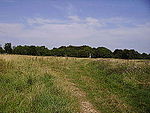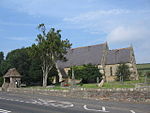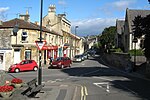Sir Bevil Grenville's Monument

Sir Bevil Grenville's Monument is a monument erected in 1720 on Lansdown Hill, then called Lansdowne Hill, in Charlcombe parish about 4 miles (6.4 km) north-west of the city of Bath, in Somerset, England. It was designated a Grade II* listed structure in 1956, and a scheduled monument in 1950.The monument commemorates the heroism of the Civil War Royalist commander Sir Bevil Grenville (1596–1643) of Stowe, Kilkhampton in Cornwall and Bideford in Devon, who on 5 July 1643 fell mortally wounded at the Battle of Lansdowne, leading his regiment of Cornish pikemen. It was erected by Grenville's grandson and has been maintained by his descendants. This has included the repair of inscriptions carved on the base of the monument, eulogising Grenville and his forces.
Excerpt from the Wikipedia article Sir Bevil Grenville's Monument (License: CC BY-SA 3.0, Authors, Images).Sir Bevil Grenville's Monument
Bath Road,
Geographical coordinates (GPS) Address Nearby Places Show on map
Geographical coordinates (GPS)
| Latitude | Longitude |
|---|---|
| N 51.431388888889 ° | E -2.3994444444444 ° |
Address
Battle of Lansdowne 1643
Bath Road
BA1 9DD
England, United Kingdom
Open on Google Maps










